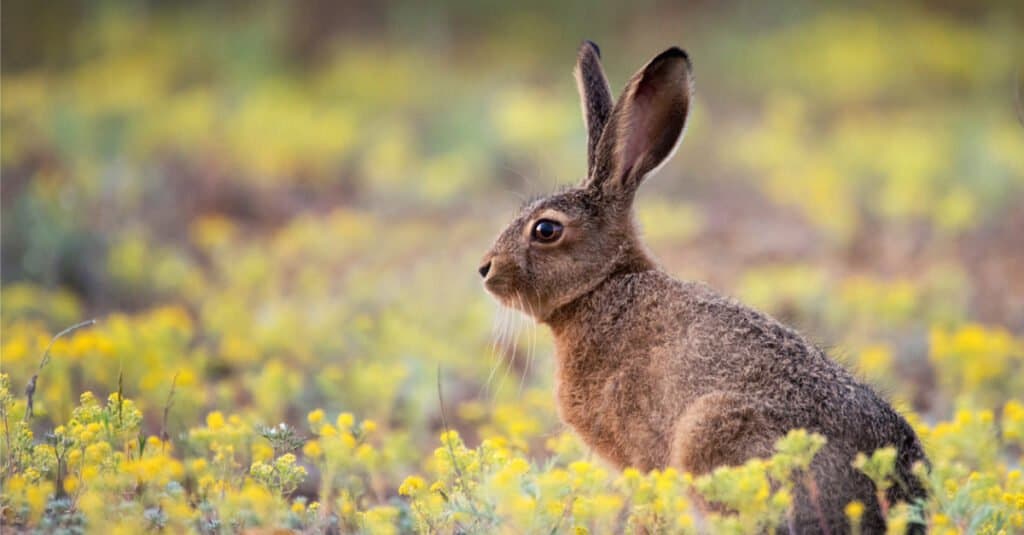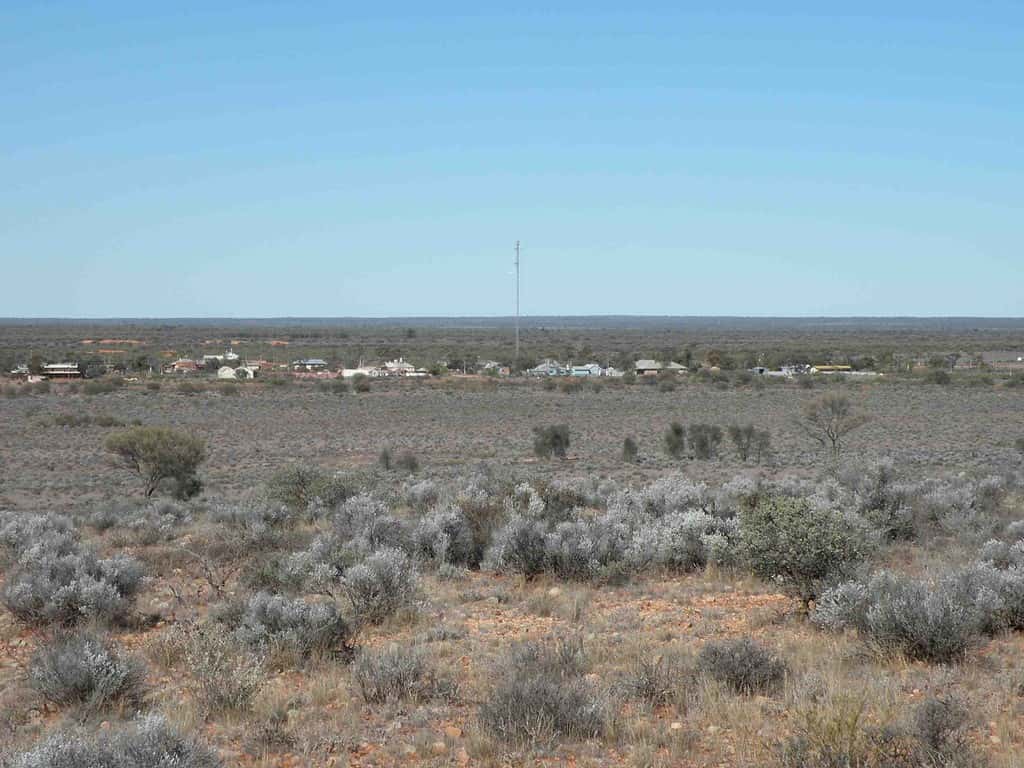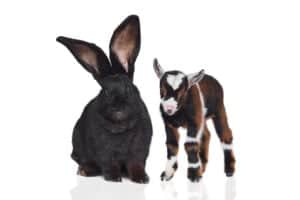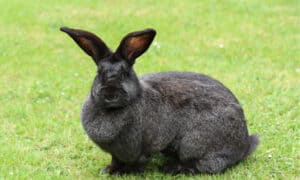Did you know Australia has a rabbit problem?
It’s estimated somewhere around 200 million wild rabbits are hopping around Australia, and they’re causing a lot of damage. Their huge numbers and large appetites are hurting both the native plants and animals. This isn’t a new problem either. Australia’s rabbit problem dates back to the early 1800s when the invasive species was first released into the wild.
How did the rabbits get to Australia in the first place? And is there any hope for the native plants and wildlife? Follow along as we learn all about wild rabbits in Australia, how they got there, and what’s being done to manage their numbers.
What Type of Wild Rabbits Live In Australia?

©iStock.com/MriyaWildlife
European rabbits, also known as feral rabbits, live throughout Australia. This invasive species belongs to the family Leporidae, the same family as hares. It’s possible feral rabbits are responsible for the extinction of a few Australian ground-dwelling species, and their presence is threatening colonies of seabirds too. Plus, there’s the agricultural damage. Hungry rabbits are destroying crops at an alarming rate, and causing soil erosion.
Appearance
European rabbits have short tails, long ears, and long hindlegs. Their famously large teeth continuously grow throughout their lifetime. Similar to deer, male rabbits are “bucks”, and females are, “does”. As for the babies, they’re “kittens”.
These rabbits are on the smaller side, with adults weighing between 2 to 5 pounds, and babies weighing 1.5 ounces or less. It’s common for newborns to have a white star on their forehead. This will begin to disappear as they mature and molt. Common colors for adults include gray and brown, and common adult sizes range from 10 to 18 inches long.
How Did the Rabbit Population Explode So Quickly?
One of the things that makes controlling the rabbit population difficult is how quickly they breed. Young rabbits start mating at as young as four months and can produce offspring at any time of the year. A single rabbit can produce over five litters a year, and each litter can have up to five young.
Where Did Rabbits in Australia Come From?
Rabbits first came to Australia with the First Fleet, and in 1827 there were reports in Tasmania about their growing populations. Fast forward and in 1859 a wealthy settler, Thomas Austin had around a dozen domestic rabbits sent to his home. It’s said he missed his homeland and the domesticated rabbits were sent to cheer him up.
Thomas Austin lived near Winchelsea, Victoria, and had over 20,000 acres of land. The rabbits had full run of his property, hopping to and fro wherever they pleased. As you may have guessed, it wasn’t long before these backyard rabbits began spreading across the county.
Within 50 years the species was able to establish populations across the continent. Feral rabbits came to Queensland by 1886, despite efforts to keep them out. The Western Australian government even built a rabbit-proof fence in the early 1900s. Yet, the clever mammals persist.
Efforts to Control Feral Rabbit Populations

Biocontrol, which involves viruses, is one of the control methods for feral rabbits in Australia.
©Boonyakiat Chaloemchavalid/iStock via Getty Images
One of the biggest problems with feral rabbits is the damage they do to crops. Here are a couple of the ways the government and farmers have tried to deal with the invading species:
- Fences
- Destroy rabbit tunnels
- Biocontrol (viruses)
- Poison
So far the most effective method has been biocontrol, or introducing viruses to the current rabbit population. However, the approach hasn’t been without its pitfalls. The government began implementing biocontrol in the 1950s. It was at this time they began releasing rabbits infected with the myxoma virus.
After introducing the virus into the wild many rabbits died, but the approach wasn’t completely successful at eradicating the species. Instead, the rabbits who survived the myxoma virus were able to develop immunity, making the virus useless moving forward.
Poison
Another effort to control the rabbits involves using poison to fumigate their warrens (rabbit burrows). Carbon monoxide is particularly helpful when fumigating their warrens.
Fences
Fences aren’t the most helpful solution because the rabbit population numbers are so high. Fences may help keep some new rabbits from entering. However, many fences wind up fencing in the rabbits already present. And the already present populations are breeding at a prolific rate. In other words, fences may assist in managing the numbers, but not in solving the problem.
Destroying Rabbit Tunnels
Another control method involves destroying rabbit tunnels, or warrens. This approach is one of the most cost-effective options. If the rabbit warren is in a rocky area, the removal usually involves explosives. Otherwise, a process known as “ripping” may be employed.
Ripping works best in large areas, and it’s most humane when the number of rabbits living in the warrens is low. This process involves using a tractor or bulldozer with rippers attached. After a warren’s fully destroyed it’s unlikely the rabbits will try to reinhabit the space.
Where Wild Rabbits in Australia Live

Feral rabbits live all over Australia, especially in areas where the soil is deep and sandy.
©Peter Bell / CC BY-SA 3.0 from Wikipedia, the free encyclopedia – License
Where can you find wild rabbits in Australia? They’re all over the place! However, the population numbers are especially high in the north-east of South Australia.
Rabbits will live anywhere the land allows them to make a home. If the soil is loose, deep, and sandy; the rabbits will find it easy to dig their warrens. Along with good soil, they also look for locations with access to water. However, living near water isn’t a must. Since they’re herbivores, rabbits get a lot of the fluids they need from the plants they eat.
What They Eat
What exactly do European rabbits eat? All sorts of plants. As herbivores, rabbits will find sustenance from wood, stems, grasses, fruits, nuts, flowers, leaves, roots, and other vegetation types.
What Eats Them?
As for what eats these rabbits, the list of predators is long and ever-growing. Dingoes, wolves, foxes, and wolves are all known to target rabbits. However, not every target is successful. With their long athletic hindlegs, European rabbits can quickly evade danger and hide in the brush. At full speed, these rabbits can reach 25 mph. However, they only maintain that momentum for short bursts.
The photo featured at the top of this post is © neil bowman/iStock via Getty Images
Thank you for reading! Have some feedback for us? Contact the AZ Animals editorial team.






